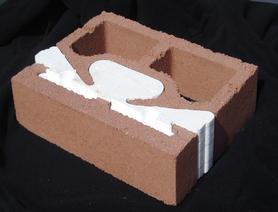Enginerdad
Structural
- May 18, 2012
- 66
I was hoping someone could help me with a detailing question. I'm designing a reinforced masonry building, but our client has inquired about using internally insulated block. I can't think of any way this would work except to eliminate the insulation in the reinforced/grouted cells. But I'm probably going to end up with reinforcement @16" (every other cell), so at that point, there's more un-insulated wall area than insulated. Is this actually the typical approach, or am I missing something.
Note: I've looked at some of the proprietary high-R-value products like NRG blocks which claim to be fully reinforceable, but this project doesn't need that level of insulation (it's a truck wash building for a public works department), and the cost wouldn't be justified.
Thanks for any insight you can provide.
Note: I've looked at some of the proprietary high-R-value products like NRG blocks which claim to be fully reinforceable, but this project doesn't need that level of insulation (it's a truck wash building for a public works department), and the cost wouldn't be justified.
Thanks for any insight you can provide.

